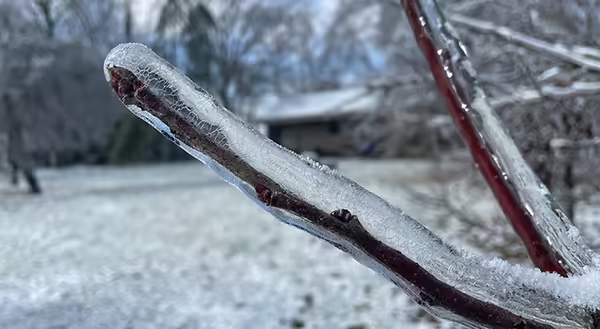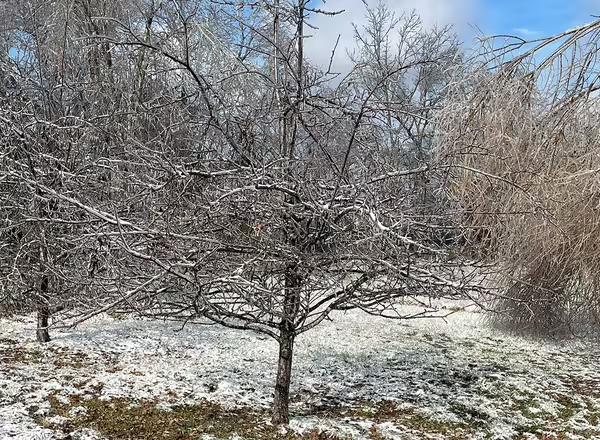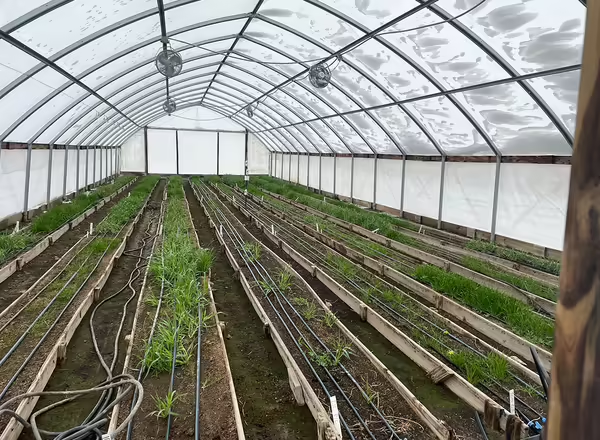
The last month or so has provided some time to catch our breath and think about the upcoming growing season. Most of the seeds and supplies have been ordered but investigating new products and items is still underway. The winter meetings are a great time to meet with vendors and industry representatives and learn more about the products they have available. The winter weather over the past three weeks has required some ice and snow removal as well as fixing a couple of uninsulated water line leaks.
Depending on your location in southern Illinois on January 5, freezing rain and/or sleet gradually turned to snow, covering surfaces with ice and snow. DSAC received one eighth to one quarter of an inch of ice with maybe one inch of snow on top. Locations further north, along the Rt 13 corridor, received around three quarters of an inch of ice and probably 2 to 3 inches of snow. Areas north of Rt 13 didn’t report much ice but quite a bit more snow. Damaged trees and downed power lines left tens of thousands without power for a number of days. More snow was received on January 10, but temperatures had reached into the 50s by January 17. An extreme temperature drop then came through starting on January 19, with lows in the single digits and the highs in the mid to upper teens.

Anecdotally, at my house, pine trees received the most damage as would be expected (several limbs were on my roof), followed by the soft maples, but the apples trees, both standard and semi-dwarfing, showed no signs of limb breakage from the weight of the ice.

The cover crops in the high tunnel continue to grow, albeit slowly during these days with minimal sunlight. The reseeding of the crimson clover did not improve the stand in any of the plots and very little biomass is expected from this species. The spring oat stand isn’t what was expected either but finding a pile of oat seed hulls on the outer edge of the tunnel is a pretty good sign that the resident rodents are enjoying winter cover crop trials. The Austrian winter pea and annual rye grass seems to have established well. Germination and plant stand differences are very noticeable between the front and back of the high tunnel. The beds towards the back of the high tunnel tend to stay wetter due to the slope and drainage around the tunnel, and the plots towards the back have a much better stand compared to the front. All the plots were hand watered and have received supplemental water through drip irrigation but the initial moisture levels 2 to 3 inches below the surface at the time of seeding impacted overall germination and plant stand.